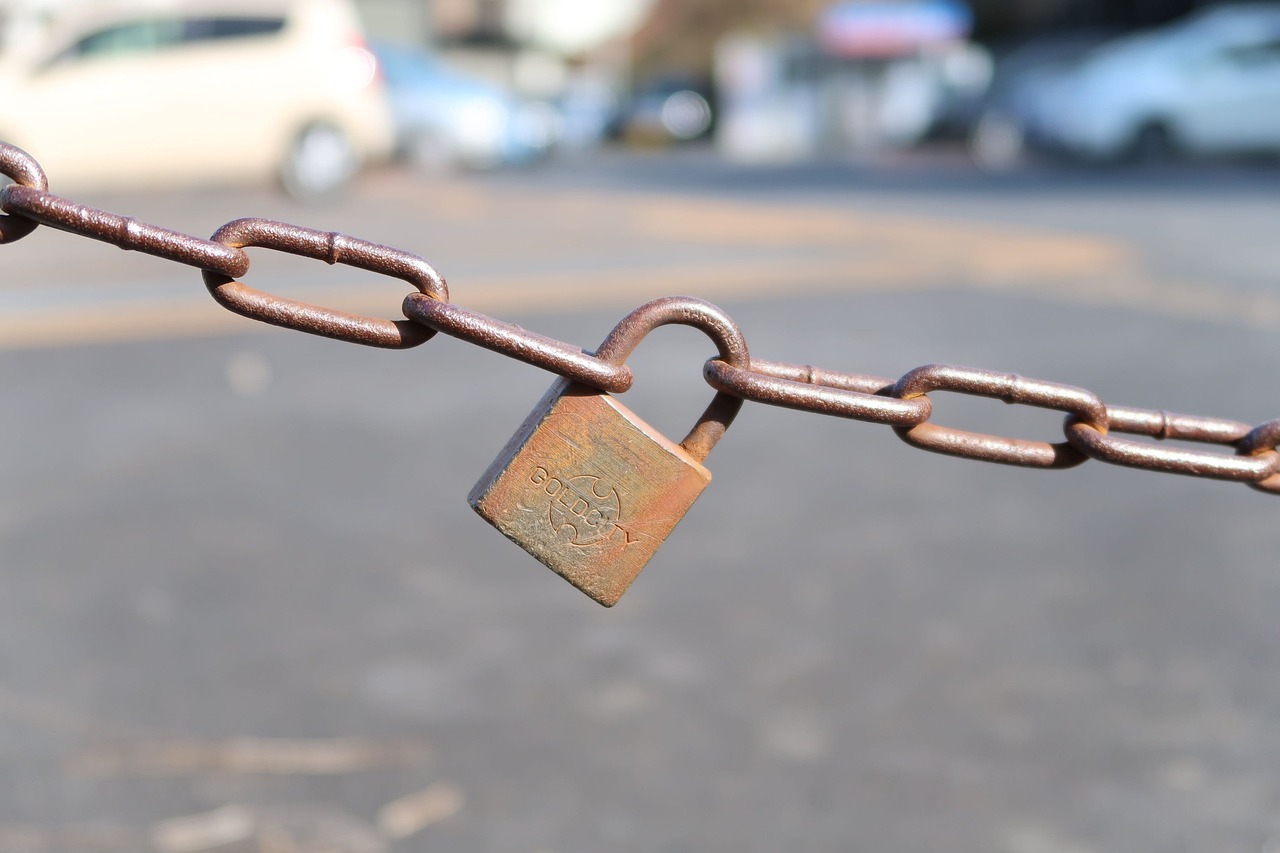Mastering the Art of Safety Through Understanding Human Behavior
In today's fast-paced world, safety is not just a set of rules or regulations; it's an intricate dance between human behavior and the environments we navigate. Have you ever wondered why certain individuals seem to prioritize safety while others take unnecessary risks? The answer lies in understanding the psychological factors that drive our decisions. By mastering the art of safety through a deeper comprehension of human behavior, we can significantly enhance safety measures and prevent accidents across various settings.
Imagine a bustling construction site where workers are constantly on the move, operating heavy machinery and handling hazardous materials. In such environments, safety is paramount. However, the effectiveness of safety protocols often hinges on the behaviors of the individuals involved. When workers are aware of the potential dangers and are motivated to adhere to safety practices, the likelihood of accidents diminishes dramatically. This connection between psychology and safety isn't just theoretical; it's a crucial aspect of creating safer workplaces and communities.
Understanding human behavior in relation to safety involves delving into several psychological principles. For instance, our perceptions of risk can vary dramatically based on past experiences, cultural influences, and even individual personality traits. Some people may underestimate dangers due to a cognitive bias known as optimism bias, while others may overestimate risks, leading to unnecessary anxiety. By recognizing these biases, organizations can tailor their safety programs to better address the unique psychological landscapes of their employees.
Moreover, fostering a culture of safety goes beyond simply implementing rules. It requires a comprehensive approach that includes training, feedback, and active employee involvement. When workers feel empowered and engaged in safety initiatives, they are more likely to adopt safe behaviors as part of their daily routines. It's about transforming safety from a chore into a shared value—an integral part of the workplace culture.
In conclusion, mastering the art of safety through an understanding of human behavior is essential in today's complex environments. By acknowledging the psychological factors that influence safety behaviors, organizations can implement effective strategies that not only protect individuals but also cultivate a proactive safety culture. This journey begins with education, open communication, and a commitment to continuous improvement, ultimately leading to safer workplaces and communities for everyone.
- What is the relationship between human behavior and safety?
Human behavior significantly influences safety practices. Understanding psychological factors can help organizations implement better safety measures. - How can organizations foster a culture of safety?
By involving employees in safety initiatives, providing continuous training, and encouraging open communication, organizations can cultivate a strong safety culture. - What are cognitive biases, and how do they affect safety?
Cognitive biases, such as optimism bias and normalization of deviance, can lead individuals to underestimate risks and make unsafe decisions. - Why is training important in safety programs?
Training reinforces safety practices and empowers employees to make informed decisions, ultimately leading to a safer work environment.

The Psychology of Safety
Understanding the psychology of safety is crucial in creating environments where individuals not only recognize but actively prioritize safety. It's fascinating how our mental processes can either enhance or undermine our safety practices. Have you ever noticed how some people seem to disregard safety measures, while others are overly cautious? This dichotomy often stems from various psychological factors that influence our perceptions and behaviors. For instance, the concept of risk perception plays a significant role in how individuals assess potential dangers. It’s not just about the actual risks present but rather how we interpret and respond to those risks.
One key aspect of this psychology is cognitive bias. Cognitive biases are systematic patterns of deviation from norm or rationality in judgment, leading individuals to make illogical decisions. For example, consider the optimism bias, where people believe they are less likely to experience negative events compared to others. This can lead to a false sense of security, causing them to neglect safety protocols. Similarly, the normalization of deviance occurs when individuals become accustomed to risky behaviors because they haven’t experienced immediate consequences. Over time, these unsafe practices can become the norm, creating a dangerous environment.
To illustrate how these psychological factors manifest in real-world scenarios, let’s take a look at a simple table that outlines common cognitive biases and their potential impact on safety behaviors:
| Cognitive Bias | Description | Impact on Safety |
|---|---|---|
| Optimism Bias | The belief that one is less likely to experience negative events | Neglect of safety measures, leading to increased risk |
| Overconfidence | Excessive confidence in one's abilities or knowledge | Underestimating risks, resulting in reckless behavior |
| Normalization of Deviance | Acceptance of risky behaviors due to lack of immediate consequences | Establishment of unsafe practices as the norm |
Understanding these biases is the first step toward mitigating their effects. By fostering a culture of safety awareness, organizations can help individuals recognize their own biases and make more informed decisions. This involves not only educating employees about the risks but also encouraging open discussions about safety concerns. When individuals feel comfortable voicing their apprehensions, it creates an environment where safety is a shared responsibility, rather than an individual burden.
In conclusion, the psychology of safety is a complex interplay of cognitive processes that significantly influence our behaviors. By recognizing the psychological factors that drive our actions, we can implement more effective safety measures that resonate on a personal level. Remember, safety isn't just a set of rules to follow; it's a mindset that requires constant nurturing and awareness.

Behavioral Safety Programs
Behavioral safety programs are not just a series of rules and regulations; they represent a profound shift in how organizations perceive and approach safety. These programs focus on the human element of safety by understanding that people are often the most significant variable in any safety equation. When we talk about behavioral safety, we’re diving into the psychology of why individuals act the way they do in relation to safety practices. It’s about recognizing that even the best safety protocols can fall short if the people implementing them don’t fully embrace their importance.
Imagine a workplace where safety is not just a checkbox on a compliance list but a core value that everyone lives by. This is the essence of behavioral safety programs. They aim to create a culture where safety is prioritized, and employees are actively involved in the process. By fostering an environment where everyone feels responsible for their own safety and the safety of their colleagues, organizations can drastically reduce the likelihood of accidents and injuries.
One of the key strengths of behavioral safety programs lies in their proactive nature. Rather than waiting for accidents to happen and then reacting, these programs encourage employees to identify potential hazards before they become issues. This shift can be likened to a sports team practicing plays before the game rather than just reacting to the opponent's moves. By training employees to spot risks and speak up about them, organizations can create a more vigilant workforce.
Furthermore, successful behavioral safety programs often incorporate several essential components that work together to create a robust safety culture. These components include:
- Training and Education: Continuous training ensures that employees are equipped with the latest safety knowledge and practices.
- Feedback Mechanisms: Regular feedback helps employees understand their performance and areas for improvement.
- Employee Involvement: Engaging employees in safety initiatives fosters a sense of ownership and accountability.
By integrating these elements into the fabric of the workplace, organizations can cultivate a strong safety culture that not only reduces accidents but also enhances overall productivity. Employees who feel safe and valued are more likely to be engaged and committed to their work, leading to improved morale and lower turnover rates.
In summary, behavioral safety programs are about more than just compliance; they’re about creating a mindset where safety is a shared responsibility. When organizations invest in understanding human behavior and implementing effective safety programs, they are not just protecting their employees—they are also investing in the long-term success of their business.

Key Components of Successful Programs
When it comes to fostering a culture of safety within an organization, the implementation of behavioral safety programs is crucial. But what exactly are the key components that make these programs successful? Understanding these elements can significantly enhance safety measures and ultimately lead to a safer work environment. First and foremost, training plays a pivotal role in ensuring that employees are well-equipped with the knowledge and skills necessary to prioritize safety. Think of training as the foundation of a sturdy building; without it, everything else may crumble. Continuous education not only reinforces safety practices but also empowers employees to make informed decisions in real-time situations.
Another critical component is the establishment of effective feedback mechanisms. Feedback loops serve as a vital link between employees and management, allowing individuals to learn from both their mistakes and successes. Imagine feedback as a mirror reflecting behaviors; it helps employees see where they excel and where they might need improvement. This two-way communication fosters a proactive safety culture, where employees feel encouraged to share their experiences and insights without fear of judgment.
Furthermore, employee involvement is essential for the success of any behavioral safety program. Engaging staff in safety initiatives not only cultivates a sense of ownership but also encourages them to take personal responsibility for their safety and that of their colleagues. When employees feel like active participants rather than passive observers, they are more likely to embrace safety practices wholeheartedly. This can be achieved through various strategies, such as forming safety committees, conducting regular safety meetings, and recognizing individuals or teams who demonstrate exemplary safety behaviors.
To illustrate these components, consider the following table that outlines how each element contributes to a successful behavioral safety program:
| Component | Description | Impact on Safety Culture |
|---|---|---|
| Training | Continuous education on safety practices and protocols. | Increases awareness and preparedness among employees. |
| Feedback Mechanisms | Two-way communication channels for sharing insights. | Encourages a culture of learning and improvement. |
| Employee Involvement | Engaging staff in safety initiatives and decision-making. | Promotes ownership and accountability for safety. |
In conclusion, the key components of successful behavioral safety programs—training, feedback mechanisms, and employee involvement—work hand in hand to create a robust safety culture. By focusing on these elements, organizations can significantly enhance their safety measures, reduce the likelihood of accidents, and ultimately create a safer, more productive work environment for everyone involved.
- What is a behavioral safety program? A behavioral safety program is an initiative designed to promote safe behaviors among employees through training, feedback, and engagement.
- How can training improve safety? Training equips employees with the knowledge and skills needed to recognize and address safety hazards effectively.
- Why is employee involvement important? Involving employees in safety initiatives fosters a sense of ownership and accountability, leading to a more proactive safety culture.
- What role does feedback play in safety programs? Feedback mechanisms provide valuable insights into employee behaviors, allowing for continuous improvement and learning.

Training and Education
When it comes to behavioral safety, training and education are not just essential; they are the bedrock upon which a culture of safety is built. Imagine stepping into a workplace where every employee is not only aware of the safety protocols but also understands the reasoning behind them. This understanding fosters a sense of ownership and responsibility, making safety a personal commitment rather than a mere obligation. Training should be an ongoing process, not a one-off event. Regular sessions, workshops, and refreshers keep safety at the forefront of employees' minds and ensure that they are equipped with the latest knowledge and skills.
Effective training programs should encompass several key elements:
- Comprehensive Curriculum: Training should cover all aspects of safety relevant to the specific workplace, including emergency procedures, equipment handling, and hazard recognition.
- Hands-On Learning: Incorporating practical exercises allows employees to apply what they've learned in real-world scenarios, solidifying their understanding and confidence.
- Tailored Content: Different roles within an organization may face unique risks. Customizing training to address these specific needs enhances its effectiveness.
Moreover, the role of education extends beyond formal training sessions. It involves creating an environment where continuous learning is encouraged. For instance, consider implementing a mentorship program where seasoned employees guide newcomers through safety protocols. This not only reinforces safety measures but also builds camaraderie and trust among team members.
Another vital aspect of training is the incorporation of technology. With advancements in virtual reality (VR) and augmented reality (AR), organizations can simulate hazardous situations without the associated risks. This immersive experience can be significantly more impactful than traditional training methods, as it allows employees to practice their responses in a safe environment. Furthermore, utilizing online platforms for training modules can provide flexibility, enabling employees to learn at their own pace and revisit the material whenever necessary.
In conclusion, investing in training and education is not just about compliance; it's about cultivating a workforce that is knowledgeable, confident, and proactive in safety matters. By prioritizing ongoing education and adapting to the evolving landscape of workplace safety, organizations can significantly reduce the risk of accidents and create a thriving safety culture.
- What is the importance of training in workplace safety?
Training equips employees with the necessary knowledge and skills to recognize hazards and respond appropriately, thereby reducing the likelihood of accidents. - How often should safety training be conducted?
Safety training should be ongoing, with regular refreshers and updates to keep employees informed of new protocols and technologies. - Can technology enhance safety training?
Yes, using tools like virtual reality and online training platforms can provide immersive and flexible learning experiences for employees.

Feedback Mechanisms
Feedback mechanisms are crucial in the realm of safety, acting as the lifeblood that keeps the safety culture thriving within an organization. Think of feedback as a mirror reflecting the behaviors and practices of employees; it helps them see where they excel and where they might need improvement. When we talk about feedback, we’re not just referring to a simple “good job” or “try harder”; we’re diving into a system that promotes continuous learning and adaptation.
One of the most effective ways to implement feedback mechanisms is through regular safety audits and assessments. These audits provide structured opportunities for employees to receive constructive feedback on their safety practices. For instance, after a safety observation, a supervisor might sit down with an employee to discuss their actions, highlighting what was done well and what could be improved. This approach not only reinforces positive behaviors but also opens the door for discussions about potential hazards and risks that may have been overlooked.
Moreover, feedback loops can be enhanced through various platforms, such as anonymous reporting systems or safety suggestion boxes. These tools empower employees to voice their concerns or provide suggestions without fear of judgment. This anonymity can often lead to more honest and valuable insights, as employees may feel safer sharing their thoughts when they know their identities are protected. Imagine a scenario where an employee notices a recurring safety issue but feels hesitant to speak up. An anonymous platform allows them to highlight this concern, potentially preventing accidents before they happen.
To ensure that feedback is effective, organizations should focus on three key areas:
- Timeliness: Feedback should be provided as soon as possible after the observed behavior. Immediate feedback helps reinforce learning and encourages quick adjustments.
- Specificity: Vague feedback can lead to confusion. Instead, feedback should be clear and specific, addressing particular actions and their outcomes.
- Constructiveness: Feedback should be framed in a positive manner, focusing on solutions and improvements rather than merely pointing out faults.
Incorporating these principles into the feedback process can significantly enhance employee engagement and commitment to safety practices. When employees see that their feedback is valued and acted upon, they are more likely to take ownership of their safety behaviors. This creates a proactive safety culture where everyone feels responsible for not just their own safety, but also the safety of their colleagues.
In conclusion, establishing robust feedback mechanisms is not just about compliance; it’s about fostering an environment where safety is a shared responsibility. By creating a culture that values feedback, organizations can significantly reduce risks and enhance overall safety performance. Remember, safety is not a destination; it’s a journey, and feedback is the compass guiding the way.
- What are feedback mechanisms? Feedback mechanisms are systems put in place to provide individuals with information about their performance, helping them to improve and adapt their behaviors.
- Why are feedback mechanisms important for safety? They promote continuous learning, reinforce positive behaviors, and help identify areas for improvement, ultimately leading to a safer work environment.
- How can organizations implement effective feedback mechanisms? Organizations can implement effective feedback mechanisms through regular audits, anonymous reporting systems, and ensuring feedback is timely, specific, and constructive.

Employee Involvement Strategies
When it comes to fostering a culture of safety, one of the most effective approaches is to actively involve employees in the safety process. After all, who knows the day-to-day risks better than those who are actually on the front lines? Employee involvement strategies are all about creating a sense of ownership and responsibility among staff, making them not just participants but champions of safety in the workplace. This approach can significantly enhance motivation and commitment to safety practices, ultimately leading to a safer work environment.
One effective strategy is to establish safety committees that include representatives from various departments. These committees can serve as a bridge between management and employees, facilitating open dialogue about safety concerns and potential improvements. By having a diverse group of employees involved, organizations can benefit from a wide range of perspectives and experiences, which can lead to innovative solutions to safety challenges. Furthermore, when employees see their ideas being taken seriously, they are more likely to engage in safe practices.
Another vital component of employee involvement is implementing peer-to-peer recognition programs. These programs encourage employees to recognize and reward their colleagues for demonstrating safe behaviors. For example, a simple "safety star" award can be given to employees who go above and beyond in promoting safety. This not only boosts morale but also reinforces the idea that safety is a shared responsibility. When employees feel appreciated for their contributions, they are more likely to continue prioritizing safety in their daily activities.
Moreover, organizations can leverage training workshops that focus on safety engagement. These workshops can be interactive and tailored to specific job roles, allowing employees to practice safety protocols and share their experiences. When employees are actively involved in their training, they are more likely to retain the information and apply it in real-world scenarios. Additionally, involving employees in the development of these training sessions can ensure that the content is relevant and resonates with their experiences.
To further enhance involvement, regular safety audits can be conducted with employee participation. This not only helps identify potential hazards but also empowers employees to take an active role in maintaining a safe workplace. When they are involved in the auditing process, they can provide valuable insights that might otherwise be overlooked. Plus, it fosters a culture of vigilance where everyone feels responsible for safety.
In conclusion, creating a robust employee involvement strategy in safety initiatives is not just beneficial; it’s essential. By engaging employees through committees, recognition programs, tailored training, and participatory audits, organizations can cultivate a proactive safety culture that not only reduces accidents but also enhances overall productivity and morale. After all, when employees feel valued and empowered, they are more likely to contribute positively to the safety landscape of their workplace.
- Why is employee involvement important for safety?
Employee involvement is crucial because it fosters a sense of ownership and accountability, making employees more likely to adhere to safety practices and report unsafe conditions. - What are some effective ways to involve employees in safety initiatives?
Effective ways include forming safety committees, implementing recognition programs, conducting interactive training workshops, and involving employees in safety audits. - How can organizations measure the success of their employee involvement strategies?
Organizations can measure success through safety performance metrics, employee feedback surveys, and the frequency of reported safety incidents before and after implementing these strategies.

Understanding Risk Perception
When it comes to safety, understanding how individuals perceive risk is crucial. Risk perception is a fascinating psychological concept that influences how we react to potential dangers in our environment. Have you ever noticed how some people seem to take unnecessary risks while others are overly cautious? This discrepancy can often be attributed to individual differences in risk perception. It's like looking at a roller coaster: some thrill-seekers see it as an exhilarating ride, while others view it as a terrifying plunge into uncertainty. This section will delve into the intricacies of risk perception and its impact on safety behaviors.
At its core, risk perception involves a complex interplay of cognitive and emotional factors. People assess risks based on their experiences, beliefs, and even societal influences. For instance, someone who has experienced a workplace accident may develop a heightened awareness of safety protocols, while another person, who has never faced such an incident, might underestimate the potential dangers. This variation can lead to significant differences in how safety measures are prioritized. Understanding these psychological underpinnings is essential for developing effective safety strategies.
One of the key aspects to consider is the role of cognitive biases. These biases can cloud our judgment and lead to miscalculations in risk assessment. For example, the optimism bias refers to the tendency of individuals to believe that they are less likely to experience negative events compared to others. This can lead to a false sense of security, causing people to overlook safety precautions. Similarly, the normalization of deviance occurs when unsafe practices become accepted as the norm over time, often because individuals become desensitized to the risks involved.
To further illustrate the impact of these biases, consider the following table that outlines common cognitive biases and their effects on safety behaviors:
| Cognitive Bias | Description | Impact on Safety |
|---|---|---|
| Overconfidence | Believing one has superior skills or knowledge. | Leads to risky decisions and neglect of safety measures. |
| Optimism Bias | Underestimating the likelihood of negative events. | Encourages complacency regarding safety protocols. |
| Normalization of Deviance | Accepting unsafe practices as standard behavior. | Increases the risk of accidents over time. |
To combat these biases and improve risk awareness, organizations can implement various strategies. One effective approach is to conduct realistic risk assessments that encourage individuals to confront potential hazards in their daily tasks. By fostering open discussions about safety and encouraging employees to share their experiences and concerns, organizations can create an environment where risk perception is accurately aligned with reality. This proactive approach not only enhances safety but also empowers individuals to take ownership of their safety practices.
In conclusion, understanding risk perception is a vital component of enhancing safety in any environment. By recognizing the psychological factors that influence how we perceive risks, organizations can tailor their safety programs to address these biases effectively. The goal is to create a culture where safety is not just an afterthought but a fundamental aspect of everyday operations. After all, when individuals feel empowered to assess risks realistically, they are more likely to prioritize safety and contribute to a safer workplace.
- What is risk perception? Risk perception is how individuals evaluate and respond to potential hazards based on their beliefs, experiences, and societal influences.
- How do cognitive biases affect safety? Cognitive biases can lead to misjudgments in risk assessment, causing individuals to underestimate dangers or accept unsafe practices.
- What strategies can improve risk awareness? Conducting realistic risk assessments and promoting open discussions about safety can enhance risk awareness among individuals.

Cognitive Biases and Safety
When it comes to safety, our minds often play tricks on us. Cognitive biases are those sneaky little shortcuts our brains take, leading us to make decisions that may not always align with the safest choice. Imagine you're driving down the highway, feeling invincible, and suddenly you decide to check your phone for a quick text. That moment of distraction could stem from an overconfidence bias, where you believe that your driving skills are above average and that accidents happen to “other people.” This is just one example of how our thought patterns can lead us astray.
Another common bias is the optimism bias, which convinces us that negative outcomes are less likely to happen to us compared to others. You might think, "I’ve driven this route a thousand times without incident; I won’t get into an accident today." While it’s great to have a positive outlook, this bias can lead to complacency, resulting in risky behaviors that compromise our safety. The truth is, every time we engage in activities that involve risk, we must acknowledge that accidents can and do happen—regardless of how experienced we feel.
Then there’s the normalization of deviance, a term that describes how people gradually come to accept risky behaviors as normal, especially when they don’t lead to immediate negative consequences. For instance, if a worker skips wearing safety gear and doesn’t get hurt, they may start to believe that such behaviors are acceptable. This gradual shift can create a dangerous culture where safety protocols are overlooked, leading to a higher likelihood of accidents in the long run.
To combat these cognitive biases, it’s essential to implement strategies that encourage a more realistic assessment of risks. Here are a few approaches:
- Training Programs: Regular training sessions can help employees recognize their biases and understand the importance of adhering to safety protocols.
- Real-Life Scenarios: Sharing stories of accidents or near misses can illustrate the consequences of ignoring safety measures, making the risks more tangible.
- Encouraging Reflection: Encourage individuals to reflect on their decisions and the potential risks involved, fostering a culture of mindfulness regarding safety.
By addressing these cognitive biases head-on, organizations can create a safer environment where individuals are more aware of their behaviors and the potential consequences. Remember, safety isn’t just about following rules; it’s about cultivating a mindset that prioritizes well-being over convenience. So, the next time you're tempted to take a shortcut or ignore a safety guideline, pause and ask yourself: Is this really worth the risk?
Q: What are cognitive biases?
A: Cognitive biases are mental shortcuts or patterns that can lead to irrational decision-making, often resulting in unsafe behaviors.
Q: How can organizations address cognitive biases?
A: Organizations can address cognitive biases by implementing training programs, sharing real-life scenarios, and encouraging employees to reflect on their decisions regarding safety.
Q: Why is it important to understand cognitive biases in safety?
A: Understanding cognitive biases is crucial because they can significantly influence decision-making and behaviors, often leading to unsafe practices and increased risks.

Improving Risk Awareness
Improving risk awareness is crucial for fostering a safer environment, whether at home, in the workplace, or in public spaces. When individuals are aware of the risks surrounding them, they can take proactive measures to mitigate those dangers. Think of risk awareness as a flashlight in a dark room; it illuminates potential hazards and allows us to navigate safely. But how do we shine that light effectively?
First and foremost, realistic assessments of potential hazards are essential. This means not just identifying what could go wrong but understanding the likelihood and impact of those risks. For instance, in an industrial setting, a thorough risk assessment might involve evaluating equipment safety, environmental conditions, and employee behavior. By analyzing these factors, organizations can develop targeted strategies to reduce risks.
Another key aspect of improving risk awareness is open discussions about potential hazards. Encouraging employees to share their experiences and observations can lead to valuable insights. When team members feel safe to voice their concerns without fear of retribution, it creates a culture of transparency and collective responsibility. This can be achieved through regular safety meetings or informal check-ins where everyone is encouraged to contribute to the conversation.
Moreover, organizations can implement training programs that focus on risk awareness. These programs should not only educate employees about existing risks but also engage them in scenario-based training. This hands-on approach allows individuals to experience potential hazards in a controlled environment, making the lessons learned more impactful. For example, a fire drill not only teaches employees how to evacuate but also reinforces the importance of being aware of fire hazards in their workplace.
Additionally, visual aids can significantly enhance risk awareness. Consider using posters, infographics, or digital displays that highlight safety protocols and potential hazards. These tools serve as constant reminders, keeping safety at the forefront of everyone’s mind. A well-placed sign that reads, “Safety First!” can be the nudge someone needs to remember to wear their protective gear.
Finally, utilizing technology can also play a pivotal role in improving risk awareness. With the advent of mobile applications and online platforms, organizations can disseminate information quickly and efficiently. For example, real-time alerts about safety issues or updates on best practices can keep everyone informed and vigilant. Imagine receiving a notification about a chemical spill before entering a potentially hazardous area—this immediate awareness can be lifesaving.
In conclusion, improving risk awareness is not just about identifying dangers; it’s about creating an environment where safety is a shared responsibility. By fostering open communication, conducting realistic assessments, implementing effective training, utilizing visual reminders, and leveraging technology, we can empower individuals to be proactive about their safety and the safety of those around them.
- What is risk awareness? Risk awareness refers to the understanding and recognition of potential hazards and risks in a given environment.
- How can organizations improve risk awareness among employees? Organizations can improve risk awareness through realistic assessments, open discussions, training programs, visual aids, and technology.
- Why is open communication important for safety? Open communication fosters a culture of transparency where employees can voice concerns and share safety-related information without fear of retribution.
- What role does training play in risk awareness? Training helps educate employees about risks and engages them in scenario-based learning, making safety practices more effective.

Creating a Safety Culture
In today's fast-paced world, is not just an option; it's a necessity. A safety culture is essentially the shared values, beliefs, and behaviors that prioritize safety within an organization. Imagine walking into a workplace where safety is as ingrained in the daily routine as checking emails. That's the kind of environment we aim to foster. But how do we get there?
First and foremost, it starts with leadership. Leaders play a pivotal role in shaping the safety culture of any organization. When leaders actively model safe behaviors, it sends a powerful message to employees: safety is a priority. It's like a captain steering a ship; if the captain is vigilant about navigating through rough waters, the crew is more likely to follow suit. Leaders should not only demonstrate safe practices but also communicate their importance consistently. This could mean regular safety meetings or even informal check-ins to discuss safety concerns.
Moreover, encouraging open communication is vital. Employees should feel comfortable voicing their concerns and sharing safety-related information without the fear of retribution. Imagine being in a situation where you notice a potential hazard but hesitate to speak up because you fear backlash. That’s a recipe for disaster! Organizations can foster this open communication by implementing anonymous reporting systems or regular feedback sessions. This ensures that everyone has a voice and feels valued in the safety conversation.
Another critical aspect of creating a safety culture is continuous training and education. Safety protocols should not be a one-time training session but rather an ongoing conversation. By providing regular training opportunities, organizations empower employees to stay informed about the latest safety practices and guidelines. It’s like teaching someone to ride a bike; the more they practice, the more confident they become. Regular workshops, drills, and simulations can keep safety at the forefront of employees' minds.
Additionally, recognizing and rewarding safe behaviors can significantly enhance a safety culture. When employees see that their efforts to prioritize safety are acknowledged, it reinforces their commitment to maintaining a safe workplace. This could be through formal recognition programs or simple shout-outs during team meetings. It’s all about creating a positive reinforcement loop where safety is celebrated, not just mandated.
Lastly, it's essential to involve employees in safety initiatives. When employees take ownership of safety practices, they are more likely to adhere to them. This can be achieved through safety committees or task forces where employees collaborate on safety strategies. Think of it as a team sport; when everyone is involved, the chances of winning— in this case, a safe work environment— are much higher.
In conclusion, creating a safety culture is an ongoing journey that requires commitment from everyone in the organization. By prioritizing leadership involvement, fostering open communication, providing continuous training, recognizing safe behaviors, and involving employees in safety initiatives, organizations can cultivate an environment where safety is not just a policy but a way of life.
- What is a safety culture? A safety culture refers to the shared values and practices that prioritize safety within an organization.
- Why is leadership important in creating a safety culture? Leaders set the tone for safety practices and behaviors; their commitment influences the entire organization.
- How can employees contribute to safety culture? Employees can participate in safety initiatives, provide feedback, and model safe behaviors.
- What role does training play in safety culture? Continuous training keeps safety practices fresh in employees' minds and empowers them to make informed decisions.

Leadership's Role in Safety Culture
Leadership plays a pivotal role in shaping and nurturing a safety culture within an organization. Think about it: if the leaders of a company prioritize safety, it sends a strong message that safety is not just an option but a fundamental value. When leaders actively demonstrate safe behaviors, it creates a ripple effect, encouraging employees to follow suit. It's like a dance; if the lead is confident and steady, the followers are more likely to feel secure and engaged in the performance.
Moreover, leaders have the unique ability to set the tone for safety practices. They can establish clear expectations and communicate the importance of safety in every meeting, training session, and company communication. This consistency is crucial because when employees see their leaders emphasizing safety, they understand that safety is not just a checkbox on a to-do list but an integral part of the company's ethos.
To effectively cultivate a safety culture, leaders should consider implementing the following strategies:
- Model Safe Behaviors: Leaders should lead by example, showcasing safe practices in their daily routines.
- Encourage Participation: Involve employees in safety discussions and decision-making processes to create a sense of ownership.
- Provide Resources: Ensure that employees have access to the necessary tools and training to perform their jobs safely.
- Recognize and Reward: Acknowledge employees who contribute to safety initiatives, reinforcing the importance of their efforts.
Furthermore, open communication is essential in fostering a safety culture. Leaders should create an environment where employees feel comfortable voicing their concerns about safety issues without fear of retribution. This can be achieved through regular safety meetings, anonymous feedback channels, and a clear process for reporting hazards. When employees know their voices matter, they are more likely to engage in safety practices actively.
In conclusion, the influence of leadership on safety culture cannot be overstated. By modeling safe behaviors, setting clear expectations, and fostering open communication, leaders can create an environment where safety is prioritized. Just like a gardener tending to their plants, leaders must nurture the safety culture, ensuring it grows strong and resilient. After all, a thriving safety culture not only protects employees but also enhances overall organizational performance.
- What is a safety culture? A safety culture refers to the shared values, beliefs, and practices regarding safety within an organization. It reflects how safety is prioritized and integrated into everyday operations.
- How can leaders improve safety culture? Leaders can improve safety culture by modeling safe behaviors, encouraging open communication, providing necessary resources, and recognizing employee contributions to safety initiatives.
- Why is employee involvement important in safety culture? Employee involvement fosters a sense of ownership and accountability towards safety practices, making them more likely to engage in safe behaviors and report hazards.

Encouraging Open Communication
When it comes to fostering a robust safety culture within an organization, open communication is absolutely crucial. Imagine working in an environment where you feel free to express your concerns and share your insights without the fear of being judged or reprimanded. This kind of atmosphere not only enhances morale but also significantly contributes to safety. Employees who feel heard are more likely to engage in safety practices and report hazards, ultimately preventing accidents before they occur.
To cultivate this open communication, organizations must establish clear channels for dialogue. This could be through regular safety meetings, suggestion boxes, or even digital platforms where employees can share their thoughts anonymously. The goal is to create a space where everyone feels empowered to speak up. For instance, consider implementing a “safety champion” program, where employees volunteer to lead discussions on safety topics, encouraging their peers to share experiences and suggestions. This initiative not only promotes engagement but also reinforces the idea that safety is a shared responsibility.
Moreover, leadership plays a pivotal role in modeling open communication. When leaders actively listen to their teams and respond positively to feedback, it sets a powerful example. Employees are more likely to follow suit when they see their leaders valuing input. Regular check-ins and open-door policies can further enhance this culture. Leaders should be approachable, making it clear that they are genuinely interested in hearing about safety concerns or suggestions.
Another effective strategy is to provide training on communication skills, emphasizing the importance of clear and respectful dialogue. This training can equip employees with the tools they need to express their thoughts confidently and constructively. When everyone is on the same page, the organization can work together to identify potential risks and develop effective solutions.
In addition to verbal communication, organizations should not overlook the importance of written communication. Safety bulletins, newsletters, and updates can keep everyone informed about best practices and any changes in safety protocols. This ongoing communication helps reinforce safety as a priority and keeps it at the forefront of employees' minds.
In conclusion, encouraging open communication is about creating a culture where safety is not just a policy but a shared value. When employees feel safe to speak up, organizations can better identify risks and implement effective safety measures. After all, safety is a team effort, and every voice counts.
- Why is open communication important for safety?
Open communication allows employees to express concerns and share insights, which can prevent accidents and enhance safety measures. - How can leaders promote open communication?
Leaders can promote open communication by being approachable, actively listening to feedback, and modeling respectful dialogue. - What are some effective strategies for encouraging employee involvement in safety?
Implementing safety champion programs and providing training on communication skills can help engage employees in safety initiatives.
Frequently Asked Questions
- What is the relationship between human behavior and safety?
Human behavior plays a crucial role in safety. Understanding psychological factors can help organizations create better safety measures and prevent accidents. When we grasp why people act the way they do regarding safety, we can tailor our approaches to encourage safer practices.
- How do behavioral safety programs work?
Behavioral safety programs focus on encouraging positive behaviors and reducing risky actions. By involving employees in the safety process, providing training, and creating feedback loops, these programs cultivate a culture where safety becomes a shared responsibility.
- What are some key components of successful behavioral safety programs?
Successful programs typically include training, feedback mechanisms, and employee involvement strategies. Continuous education empowers employees to make informed decisions, while feedback helps them learn from both mistakes and successes, enhancing overall safety.
- How can cognitive biases impact safety behaviors?
Cognitive biases, like overconfidence and optimism bias, can lead individuals to underestimate risks, resulting in unsafe actions. By recognizing these biases, organizations can develop strategies to mitigate their effects and promote safer decision-making.
- What strategies can improve risk awareness among employees?
Enhancing risk awareness involves realistic assessments and open discussions about potential hazards. Organizations can conduct training sessions, workshops, and regular safety meetings to ensure everyone understands the risks involved in their tasks.
- How can organizations create a strong safety culture?
A strong safety culture is built on leadership commitment, open communication, and employee involvement. Leaders must model safe behaviors and set expectations, while communication channels should allow employees to voice concerns without fear of retribution.
- What role does leadership play in promoting safety?
Leadership is pivotal in shaping a safety culture. Leaders who prioritize safety and demonstrate safe behaviors influence their teams to do the same, establishing a standard that reinforces the importance of safety throughout the organization.
- Why is open communication important for safety?
Open communication fosters an environment where employees feel comfortable discussing safety concerns and sharing information. This transparency is vital for identifying potential hazards and implementing effective safety measures.


















